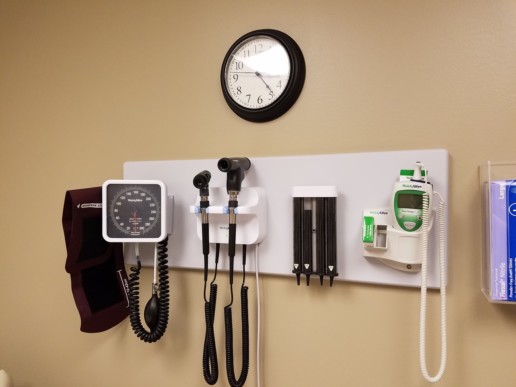3 steps to negotiating a better employee benefit annual renewal
Do you know how to negotiate your annual employee benefits renewal? Employee benefits are commonly the second-highest expense for employers, coming in second behind employee payroll. Read on to learn more.
Employee benefits are typically the second-highest expense for employers — right behind payroll. But unlike payroll, benefits are difficult to budget for each year because the upcoming annual renewal rate can feel like a total mystery.
Not knowing what the renewal rate will be until the end of the plan year complicates the balance that employers must strike between offering rich benefits employees appreciate at a cost the finance team can live with. It doesn’t have to be that way.
Knowing how to approach the annual renewal with your health carrier, pharmacy benefits manager and other players can help the savvy employer save some money while maintaining the same level of benefits as before. The ticket is planning for the annual renewal all year long, which removes the mystery and leads to a predictable rate.
Here are three steps to negotiating the annual renewal with your carrier.

1. Create a good carrier relationship. A great way to gain control of what happens at the end of the benefit plan year is to set the tone from the beginning. This means outlining expectations before signing a contract and communicating wants and needs throughout the plan period. If you’ve developed a good relationship with your carrier, you should have an easier time coming to an agreement on the annual renewal rate.
Building good carrier relationships extends beyond the carrier you’re currently working with to others in the market. One way to maintain a good relationship is to avoid marketing to all carriers for the best rate before each renewal period. Carriers spend time and money responding to requests for proposal (RFPs); if they respond year after year without winning the business, they may lose interest when you are ready to move your benefits plan.
2. Get plan renewals early. Left unchecked, most carriers hold the benefit plan renewal rate as long as possible (60-75 days before the end of a contract). But receiving your carrier’s initial renewal rate earlier gives you more time to evaluate the renewal and negotiate the rate. (Yes, it’s true — you don’t have to accept the first number the carrier offers.) The best way to ensure your request for an early renewal rate is heard and followed is to discuss it before signing a contract.
By receiving your renewal rate approximately 120 days before the end of your contract, you have enough time to evaluate the rate together with your health and welfare benefits broker and underwriting team and then respond with another offer. And if you feel that another carrier can offer better rates, you can also market your benefits plan and still have time to switch carriers before the contract ends.
3. Offer a fair and reasonable rate. After you receive your annual renewal rate, work with your internal team and your benefits broker to begin negotiations. Importantly, this doesn’t mean countering with a number so low that the carrier finds it untenable and unreasonable. In that case, the insurer may not meet your demand and you’ll be forced to turn to other carrier options without having planned for that possibility.
Instead, respond with a fair and reasonable rate increase backed by data. The goal is to counter offer with a number that creates stability and predictability for renewals in the future.
Learning your renewal rate for each plan year can be stressful, but it doesn’t have to be. Getting information early, negotiating a fair rate and maintaining good carrier relationships can help you create a better annual renewal with better predictability and improved budgeting year after year.
SOURCE: Strain, M (24 October 2018) "3 steps to negotiating a better employee benefit annual renewal" (Web Blog Post). Retrieved from https://www.employeebenefitadviser.com/opinion/3-steps-to-negotiating-a-better-employee-benefit-annual-renewal?brief=00000152-1443-d1cc-a5fa-7cfba3c60000
8 ways to maintain HSA eligibility
Is your high-deductible health plan still HSA qualified? Ensuring your high-deductible health plan remains HSA qualified is no easy task. Read this blog post for eight ways employers can maintain HSA eligibility.
For employers sponsoring high-deductible health plans with health savings accounts, ensuring that the HDHP continuously remains HSA qualified is no easy task. One challenge in this arena is that most of the rules and regulations are tax-related, and most benefit professionals are not tax professionals.
To help, we’ve created a 2019 pre-flight checklist for employers.
With 2019 rapidly approaching and open enrollment season beginning for many employers, now’s a great time to double-check that your HDHP remains qualified. Here are eight ways employers can maintain HSA eligibility.
1. Ensure in-network plan deductibles meet the 2019 minimum threshold of $1,350 single/$2,700 family.
To take the bumps out of this road, evaluate raising the deductibles comfortably above the thresholds. That way, you won’t have to spend time and resources amending the plan and communicating changes to employees each year that the threshold increases. Naturally, plan participants may not be thrilled with a deductible increase; however, if your current design requires coinsurance after the deductible, it’s likely possible on a cost neutral basis to eliminate this coinsurance, raise the deductible and maintain the current out-of-pocket maximum. For example:
| Current | Proposed | |
| Deductible | $1,350 single / $2,700 family | $2,000 single / $4,000 family |
| Coinsurance, after deductible | 80% | 100% |
| Out-of-pocket maximum | $2,500 single / $5,000 family | $2,500 single / $5,000 family |
This technique raises the deductible, improves the coinsurance and does not change the employee’s maximum out-of-pocket risk. The resulting new design may also prove easier to explain to employees.
2. Ensure out-of-pocket maximums do not exceed the maximum 2019 thresholds of $6,750 single/$13,500 family.
Remember that the 2019 HDHP out-of-pocket limits, confusingly, are lower than the Affordable Care Act 2019 limits of $7,900 single and $15,800 family. (Note to the U.S. Congress: Can we please consider merging these limits?) Also, remember that out-of-pocket costs do not include premiums.
3. If your plan’s family deductible includes an embedded individual deductible, ensure that each individual in the family must meet the HDHP statutory minimum family deductible ($2,700 for 2019).
Arguably, the easiest way to do so is making the family deductible at least $5,400, with the embedded individual deductible being $5,400 ÷ 2 = $2,700. However, you’ll then have to raise this amount each time the IRS raises the floor, which is quite the hidden annual bear trap. Thus, as in No. 1, if you’re committed to offering embedded deductibles, consider pushing the deductibles well above the thresholds to give yourself some breathing room (e.g., $3,500 individual and $7,000 family).
For the creative, note that the individual embedded deductible within the family deductible does not necessarily have to be the same amount as the deductible for single coverage. But, whether or not your insurer or TPA can administer that out-of-the-box design is another question. Also, beware of plan designs with an embedded single deductible but not a family umbrella deductible; these designs can cause a family to exceed the out-of-pocket limits outlined in No. 2.
Perhaps the easiest strategy is doing away with embedded deductibles altogether and clearly communicating this change to plan participants.

4. Ensure that all non-preventive services and procedures, as defined by the federal government, are subject to the deductible.
Of note, certain states, including Maryland, Illinois and Oregon, passed laws mandating certain non-preventive services be covered at 100%. While some of these states have reversed course, the situation remains complicated. If your health plan is subject to these state laws, consult with your benefits consultant, attorney and tax adviser on recommended next steps.
Similarly, note that non-preventive telemedicine medical services must naturally be subject to the deductible. Do you offer any employer-sponsored standalone telemedicine products? Are there any telemedicine products bundled under any 100% employee-paid products (aka voluntary)? These arrangements can prove problematic on several fronts, including HSA eligibility, ERISA and ACA compliance.
Specific to HSA eligibility, charging a small copay for the services makes it hard to argue that this isn’t a significant benefit in the nature of medical care. While a solution is to charge HSA participants the fair market value for standalone telemedicine services, which should allow for continued HSA eligibility, this strategy may still leave the door open for ACA and ERISA compliance challenges. Thus, consider eliminating these arrangements or finding a way to compliantly bundle the programs under your health plan. However, as we discussed in the following case study, doing so can prove difficult or even impossible, even when the telemedicine vendor is your TPA’s “partner vendor.”
Finally, if your firm offers an on-site clinic, you’re likely well aware that non-preventive care within the clinic must generally be subject to the deductible.
5. Depending on the underlying plan design, certain supplemental medical products (e.g., critical illness, hospital indemnity) are considered “other medical coverage.” Thus, depending on the design, enrollment in these products can disqualify HSA eligibility.
Do you offer these types of products? If so, review the underlying plan design: Do the benefits vary by underlying medical procedure? If yes, that’s likely a clue that the products are not true indemnity plans and could be HSA disqualifying. Ask your tax advisor if your offered plans are HSA qualified. Of note, while your insurer might offer an opinion on this status, insurers are naturally not usually willing to stand behind these opinions as tax advice.
6. The healthcare flexible spending account 2 ½-month grace period and $500 rollover provisions — just say no.
If your firm sponsors non-HDHPs (such as an HMO, EPO or PPO), you may be inclined to continue offering enrollees in these plans the opportunity to enroll in healthcare flexible spending accounts. If so, it’s tempting to structure the FSA to feature the special two-and-a-half month grace period or the $500 rollover provision. However, doing so makes it challenging for an individual, for example, enrolled in a PPO and FSA in one plan year to move to the HDHP in the next plan year and become HSA eligible on day one of the new plan year. Check with your benefits consultant and tax adviser on the reasons why.
Short of eliminating the healthcare FSA benefit entirely, consider prospectively amending your FSA plan document to eliminate these provisions. This amendment will, essentially, give current enrollees more than 12 months’ notice of the change. While you’re at it, if you still offer a limited FSA program, consider if this offering still makes sense. For most individuals, the usefulness of a limited FSA ebbed greatly back in 2007. That’s when the IRS, via Congressional action, began allowing individuals to contribute to the HSA statutory maximum, even if the individual’s underlying in-network deductible was less.
7. TRICARE
TRICARE provides civilian health benefits for U.S Armed Forces military personnel, military retirees and their dependents, including some members of the Reserve component. Especially if you employ veterans in large numbers, you should become familiar with TRICARE, as it will pay benefits to enrollees before the HDHP deductible is met, thereby disqualifying the HSA.
8. Beware the incentive.
Employers can receive various incentives, such as wellness or marketplace cost-sharing reductions, which could change the benefits provided and the terms of an HDHP. These types of incentives may allow for the payment of medical care before the minimum deductible is met or lower the amount of that deductible below the statutory minimums, either of which would disqualify the plan.
This article originally appeared in Employee Benefit News.
SOURCE: Pace, Z.; Smith, B. (22 October 2018) "8 ways to maintain HSA eligibility" (Web Blog Post). Retrieved from https://www.employeebenefitadviser.com/opinion/8-ways-to-maintain-hsa-eligibility
The approaching ACA premium tax moratorium – take 2
In 2010, Congress scheduled the 2014 Affordable Care Act premium tax. Then in 2015 Congress introduced a one-year moratorium on the premium tax that would take place in 2017. This past January, Congress placed another moratorium for the ACA premium tax in 2019. Continue reading to learn more.
In 2010, Congress scheduled the 2014 introduction of the Affordable Care Act premium tax (aka the health insurer fee). Then, via the PACE Act of October 2015, Congress placed a one-year moratorium on this 4% or so premium tax for calendar year 2017. You might recall our ensuing discussion a couple of years ago about how employers sponsoring fully insured medical, dental and/or vision plans could leverage this 2017 moratorium to their advantage.
See also: ACA: 4 things employers should focus on this fall
Meanwhile, did you notice back in January that Congress placed another moratorium on this tax, this time for 2019? To review:
- 2014-2016 – Tax applies
- 2017 – Under moratorium
- 2018 – Tax applies
- 2019 – Under moratorium
- 2020 – Tax scheduled to return
Fortunately, in moratorium years, fully insured medical, dental and vision premiums should be about 4% lower than they would have been otherwise, with these savings passed along proportionately by most employers to their plan participants.
Unfortunately, the budgetary challenge of this on-again-off-again Congressional approach is that when the tax returns, fully insured renewals naturally go up about 4% more than they would have otherwise. For example, an 8% premium increase becomes 12%.
See also: Proposals for Insurance Options That Don’t Comply with ACA Rules: Trade-offs In Cost and Regulation
Another complication occurs as employers annually compare the expected and maximum costs of self-funding their plans versus fully insuring the plans. Because this tax generally does not apply to self-funded plans, in “tax applies” years, any expected savings from self-funding will show about 4% higher than in moratorium years. This math especially complicates the financial comparison of level funding contracts to fully insured contracts (almost all level funding products are self-funded contracts).
With the Jan. 1 fully insured medical, dental and vision renewals beginning to cross our desks, what should employers do?
First, they should review the renewal’s rating methodology page and ensure that this tax was not included in the proposed 2019 premiums. If the rating methodology page was not provided, request it. If this request fails, ask for written confirmation that this tax is not included in your plan’s 2019 premiums.
Second, when comparing 2019 expected and maximum mature self-funded plan costs to 2019 fully insured premiums, extend the analysis to 2020 and project what will happen when this 4% fully insured tax tide returns.
See also: Pre-existing Conditions and Medical Underwriting in the Individual Insurance Market Prior to the ACA
Finally, complicating matters, several states, including Maryland, introduced new or higher state premium taxes for 2019. Ask your benefits consultant if these actions will impact your plans. For Maryland employers sponsoring fully insured plans, for example, the new additional one-year premium tax will essentially cancel out the 2019 ACA premium tax moratorium.
SOURCE: Pace, Z (27 September 2018) "The approaching ACA premium tax moratorium – take 2" (Web Blog Post). Retrieved from https://www.benefitnews.com/opinion/the-approaching-obamacare-premium-tax-moratorium?brief=00000152-14a5-d1cc-a5fa-7cff48fe0001
Top 10 health conditions costing employers the most
As healthcare costs continue to rise, employers continue to look for ways to target those costs. Read this blog post to learn more.
As healthcare costs continue to rise, more employers are looking at ways to target those costs. One step they are taking is looking at what health conditions are hitting their pocketbooks the hardest.
“About half of employers use disease management programs to help manage the costs of these very expensive chronic conditions,” says Julie Stich, associate vice president of content at the International Foundation of Employee Benefits Plans. “In addition, about three in five employers use health screenings and health risk assessments to help employees identify and monitor these conditions so that they can be managed more effectively. Early identification helps the employer and the employee.”
What conditions are costly for employers to cover? In IFEPB’s Workplace Wellness Trends 2017 Survey, more than 500 employers were asked to select the top three conditions impacting plan costs. The following 10 topped the list.
10. High-risk pregnancy
9. Smoking
8. High cholesterol
7. Depression/mental illness
6. Hypertension/high blood pressure
5. Heart disease
4. Arthritis/back/musculoskeletal
3. Obesity
2. Cancer (all kinds)
1. Diabetes
Seeing beyond size in vision care networks
How do you measure the quality of your vision care network? When it comes to the world of vision care, size isn't the only factor to consider when deciding which network best fits the needs of your employees. Read on to learn more.
Most people believe that “size matters” in regards to provider networks, but in the world of vision care, there are other important factors to consider when deciding which network matches the needs of employees. Network members usually see their vision provider for routine services just once per year. When an employer changes vision administrators, employee in-network utilization is more than 90% regardless of the new network size. Why? Employees are not concerned about changing providers to access in-network benefits. Plus, the new vision provider network will always provide access to multiple providers wherever the employee lives and works.
But what about the quality of the vision care network? To properly assess this measurement of competing networks, employers and benefits advisors need to ask several different questions.
Determine the network’s quality
The quality of the network is vital. Start asking these questions: How are vision care providers credentialed? Do they follow the National Committee for Quality Assurance (NCQA) guidelines developed to improve healthcare quality? Are there provider audit programs provided on an ongoing basis? Is the vision care provider re-credentialed and how often? How frequently are reviews conducted of the Office of Inspector General and Medicare and Medicaid disbarment lists?
Establish the network’s effectiveness
Once you know you have a quality network, now you must ask how effective the network is. How diverse is the network? Are there ample ophthalmologists, optometrists and optical retailers we can access? Are some private practitioners? You want to make sure that a solid provider mix is available to give employees options when choosing a vision care provider.
It’s critical to know what languages are spoken within the employee population as well as the providers who care for them. If you have a large population who speak a certain language you want to make sure your network gives them access to people who can truly understand them and with whom they feel comfortable.
Finally, look at the hours of operations. With schedules being busier now than ever before, people need flexibility when it comes to visiting hours. Do they offer evening hours? Weekend hours? This is particularly important for single parents who work during the week and need the flexibility to visit an eye care professional with his or her child after work.
Having a diverse, quality vision care provider network with convenient access helps keep employees happy, healthy and in-network.
Other factors to consider
One of the other factors to be cognizant of is network ownership. Today, many managed vision care companies are involved in not only providing coverage for vision care but also in delivering it. This means the vision benefits company you’re considering may own optical laboratories, frame companies or retail locations, which can pose conflicts of interest between you, your employees and the managed vision care company. Their need to produce profits can lead to undo pressure on your employees to purchase expensive and potentially unnecessary lens types, materials and options. Coupled with direct to consumer advertising and the expansion of brands, eyeglasses have become even more expensive.
This leads to another factor for consideration. Does the potential vision benefit administrator provide meaningful information to help your employees make informed decisions about what they really need, when it comes to the myriad of options available for frames, lenses and lens options?
Network matching
Start by remembering two things when matching networks. First, if you’ve changed vision carriers in the past, you selected a network that was not identical to your previous one. Vision networks never match each other. Some have higher proportions of independent providers and lower percentages of large retailer chains. Second, the infrequency with which the vision benefit is available to be used mitigates the impact of changing providers. People don’t have the same attachment to their eye care professional as they do with their physician.
Beyond quality and effectiveness is the important factor of access. The vision industry has grown to a point where there are often many more providers than would ever be necessary to provide convenient access for your membership. The reality is that two networks may be equally sized in an area and yet there may be little overlap, making the selection of the best network with the lowest overall cost a better strategic direction than simply selecting the one with the highest provider match.
The vision industry has long demonstrated that employees are willing to select new providers, especially when costs are more competitive, and services are more convenient.
SOURCE: Moroff, C (22 August 2018) "Seeing beyond size in vision care networks" (Web Blog Post). Retrieved from https://www.employeebenefitadviser.com/opinion/seeing-beyond-size-in-vision-care-networks?feed=00000152-a2fb-d118-ab57-b3ff6e310000
ACA: 4 things employers should focus on this fall
Yes, employers still need to worry about the Affordable Care Act and its many rules and regulations. Read this blog post for more information.
During the coming months, employers may have questions about whether they still need to worry about the Affordable Care Act (ACA). The answer is yes; the ACA is alive and well, despite renewed legal challenges and the elimination of the individual mandate beginning next year.
While the Tax Cuts and Jobs Act reduced the tax penalty for individuals who don’t have health coverage to $0, effective for 2019, employers are still subject to penalties for failing to comply with certain ACA rules. For example, the IRS is currently enforcing “employer shared responsibility payments” (ESRP) penalties against large employers who fail to meet the ACA requirements to offer qualifying health coverage to their full-time employees. For this purpose, large employers are those with 50 or more full-time or full-time equivalent employees. Here are four things about the ACA that employers should focus on now to avoid significant financial liabilities.
1. The IRS is currently assessing penalties using 226-J letters
In 2017, the IRS began assessing ESRP penalties against large employers that failed to offer qualifying health coverage to at least 95 percent of their full-time employees. An ESRP penalty assessment comes in the form of a 226-J letter, which explains that the employer may be liable for the penalty, based on information obtained by the IRS from Forms 1095-C filed by the employer for that coverage year, and tax returns filed by the employer’s employees. The employer has only 30 days to respond to the 226-J letter, using IRS Form 14764, which is enclosed with the 226-J letter. The employer must complete and return IRS Form 14765 to challenge any part of the assessment.
The short timeframe for responding to a 226-J letter means that staff who are likely to be the first to receive communications from the IRS should have a plan in place to react quickly. Training for staff should include information about who to notify and what documentation to keep readily available to support an appeal. Not responding to the IRS 226-J letter will result in a final assessment of the proposed penalty. These penalties can be significant. In the worst case, an employer with inadequate health coverage could pay for the cost of the coverage, as well as penalties of $2,000/year (as indexed) for every full time employee (less 30), even those who received health coverage from the employer.
Depending on the employer’s response to the initial assessment, the IRS will then send the employer one of four types of 227 acknowledgment letters. If the employer disputes the penalty, the IRS could accept the employer’s explanation and reduce the penalty to $0 (a 227-K letter). But if the IRS rejects any part of the employer’s response, the employer will receive either a 227-L letter, with a lower penalty amount, or a 227-M letter, a notice that the amount of the initial assessment hasn’t changed. These letters will explain steps the employer has to take to continue disputing the assessment, including applicable deadlines. The next phase of the appeal might include requesting a telephone conference or meeting with an IRS supervisor, or requesting a hearing with the IRS Office of Appeals.
2. ACA reporting requirements and penalties still apply
Along with the ESRP penalties, the Form 1094-C and 1095-C reporting requirements still apply to large employers. The IRS uses information on Forms 1095-C in applying the ESRP rules and deciding whether to assess penalties against the reporting employer. Large employers must file Forms 1095-C every year with the IRS and send them to full-time employees in order to document compliance with the ACA requirement to offer qualified, affordable coverage to at least 95 percent of full-time employees. Technically, the forms are due to employees by January 31, and to the IRS by March 31, each year, to report compliance for the prior year. In the past, the IRS has extended the deadline for providing the forms to employees, but not the deadline for filing with the IRS.
Penalties can apply if an employer fails to file with the IRS or provide the forms to employees, and the penalty amount can be doubled if the IRS determines that the employer intentionally disregarded the filing requirement. These penalties can apply if an employer fails to file or provide the forms at all, files and provides the forms late, or if the forms are timely filed and provided, but are incorrect or incomplete.
In some instances, the IRS has assessed ESRP penalties based on Form 1095-C reporting errors. So, in addition to the reporting-related penalties, inaccurate information on Forms 1095-C can lead to erroneous ESRP assessments that the employer will then need to refute, using the IRS forms and procedures described above.
Employers should carefully monitor their ACA filings and reports, and consider correcting prior forms if errors are discovered. Employers should also continue tracking offers of coverage made for each month of 2018, to prepare for compliance with the Form 1095-C reporting requirement early in 2019.
3. “Summary of Benefits and Coverage” disclosure forms are still required
The ACA added a new disclosure requirement for group health plans, called a “Summary of Benefits and Coverage” or “SBC,” that’s intended to help employees make an “apples to apples” comparison of different benefit plan features, such as deductibles, out-of-pocket maximums, and copayments for various benefits and services. This requirement still applies, and SBCs must be provided during open enrollment, upon an employee’s initial eligibility for coverage under the plan, and in response to a request from an employee. The template SBC form and instructions for completing it were updated for coverage periods starting after April 1, 2017. For 2018, a penalty of $1,128 per participant can apply to the failure to provide an SBC as required.
4. The “Cadillac Tax” has not been repealed
The ACA’s so-called Cadillac tax — an annual excise tax on high-cost health coverage — was initially scheduled to take effect in 2018. The Cadillac tax has been repeatedly delayed, and the federal budget bill passed in January delayed it again through December 31, 2021. Despite the repeated delays, the Cadillac tax has not been repealed and is currently scheduled to apply to health coverage offered on or after January 1, 2022. This might be an issue to consider for employers who are negotiating collective bargaining agreements in 2018 that include terms for health benefits extending beyond 2021.
While uncertainty continues to surround the ACA, employers should remain aware of continuing compliance requirements to avoid the potentially significant penalties that remain in effect under the ACA.
Boyette, J; Masson, L (21 August 2018) "ACA: 4 things employers should focus on this fall" (Web Blog Post). Retrieved from https://www.benefitspro.com/2018/08/21/aca-4-things-employers-should-focus-on-this-fall/
New rule pushes for hospital price transparency
The Centers for Medicare & Medicaid Services is pushing for a new rule that will force hospitals to provide patients with a list of the cost of all their charges. Continue reading to learn more.
The Centers for Medicare & Medicaid Services announced a proposed rule aimed at providing patients with a clear price listing of the cost of their hospital charges. In an effort to fulfill the proposed rule’s objective, CMS suggested an amendment to the requirements previously established by Section 2718(e) of the Affordable Care Act.
CMS issued the final rule (CMS-1694-F), which included the suggested amendment discussed in the April 24, 2018 proposed rule. Currently, under Section 2718(e), hospitals are given the option to either (i) make public a list of the hospital’s standard charges or (ii) implement policies for allowing the public to view a list of the hospital’s standard charges in response to an individual request.
Beginning January 1, 2019, however, hospitals will be required to make available a list of their current standard charges via the Internet in a machine readable format and to update this information at least annually, or more often as appropriate.
This could be in the form of the chargemaster itself of another form of the hospital’s choice, as long as the information is in machine readable format. CMS believes that this update will further promote price transparency by improving public accessibility of hospital charge information.
In the final rule, CMS explains that it is aware of the challenges that continue to exist because the chargemaster data may not accurately reflect what any given individual is likely to pay for a particular service or visit.
Additionally, the comments received in response to the proposed rule argue that the chargemaster data would not be useful to patients because it is confusing as to the amount of the actual out-of-pocket costs imposed on a particular patient.
CMS further explains that it is currently reviewing the concerns addressed in the comments, and is considering ways to further improve the accessibility and usability of the information disclosed by the hospitals.
SOURCE: Goldman, M; Grushkin, J; Fierro, C (16 August 2018) "New rule pushes for hospital price transparency" (Web Blog Post). Retrieved by https://www.employeebenefitadviser.com/opinion/cms-rule-pushes-for-hospital-price-transparency
Amazon has just entered the drug-distribution business
Amazon is on top, knocking big competitors out one by one. Today, they take down pharmacies by offering online health-care services. See what Amazon has in store here.
Amazon.com Inc. agreed to buy the online pharmacy startup PillPack, jumping into the health-care business with a deal that will give the retail giant an immediate nationwide drug network.
The move represents a formidable threat to pharmacy chains including Walgreens Boots Alliance Inc., which earlier Thursday reported tepid U.S. same-store sales, and rival CVS Health Corp. Walgreens was down 10 percent at 10:18 a.m. in New York, while CVS shares shed 8.9 percent.
Terms of the deal weren’t disclosed. The transaction is expected to close in the second half of 2018, according to a statement from the companies.
The U.S. market for prescription medicine is huge. In 2016, U.S. consumers spent $328.6 billion on retail prescription drugs, according to the U.S. government. CVS reported prescription sales of $59.5 billion last year, and Walgreens sold $57.8 billion worth of drugs in its fiscal 2017.
PillPack has mail-order pharmacy licenses in all 50 U.S. states, which could allow Amazon to expand quickly. PillPack also has relationships with most major drug-benefit managers, including Express Scripts and CVS, and says it works with most Medicare Part D drug plans. Those ties will give Amazon access to much of the prescription drug market in the U.S.
PillPack sells pre-sorted packets of prescriptions drugs, delivering them to customers in their homes. The closely held firm has software that automates many routine pharmacy tasks, such as verifying when a refill is due, determining co-pays, and confirming insurance. That eliminates much of the manual work that pharmacists often are saddled with now.
The pact follows months of speculation about Amazon’s plans to get into the pharmacy or drug-distribution business. Despite the retailer’s vast reach, entering the market presented a daunting logistical challenge in terms of licensing and dealing with a range of private and government payers. Acquiring PillPack’s networks helps Amazon surmount those hurdles.
Michael Rea, chief executive officer of Rx Savings Solutions, said PillPack could transform the industry and that employers and health plans would benefit from the deal, which he called a “sign of the times.”
“This move signals just how big of a market opportunity there is to change the pharmacy landscape,” Rea said in an email.
Amazon has been disrupting businesses from electronics to household staples and even package delivery. Pharmacy and health-benefits companies have long fretted that they’d be next. Chief Executive Officer Jeff Bezos signaled his interest in health-care earlier this year when he teamed up with Berkshire Hathaway Inc.’s Warren Buffett and JPMorgan Chase & Co.’s Jamie Dimon to form a health-care company to manage the health plans of their more than 1 million employees.
The selloff in drugstore stocks was reminiscent of the food-industry swoon that resulted in June 2017 when Amazon said it was buying Whole Foods Market Inc. Kroger Co., the biggest U.S. supermarket chain, saw $2 billion in market value wiped out in one day. Big packaged food stocks also took a hit.
“When Amazon sneezes, everybody else catches a cold,” said Joseph Feldman, an analyst with Telsey Advisory. “And I think that that’s more likely than not what you’re going to see today.”’
Long time coming
Prescription drugs sales are largely intertwined with groceries and personal items like makeup and shampoo and Amazon already sells bulk packs of latex gloves, bed pads and syringes. It recently began selling medical devices and instruments, as well.
Bezos has been thinking about the drug business for nearly two decades; in 1999, Amazon purchased a stake in Drugstore.com. That effort ultimately failed and Walgreens purchased the money-losing startup in 2011 and ultimately shut it down.
Pharmacist TJ Parker and computer scientist Elliot Cohen founded PillPack in 2013 after meeting at a medical-technology program at the Massachusetts Institute of Technology. The company raised more than $118 million from brand-name investors including Accel, Sherpa Capital and New York rapper Nas’s Queensbridge Venture Partners.
A September 2016 funding round valued the Boston-based startup at around $360 million, according to venture-capital database PitchBook. In April, CNBC reported Walmart Inc. was in talks to buy the company for “under $1 billion,” citing unnamed sources.
Standing firm
For now, Walgreens indicated that it was in no hurry to find a deal to respond to Amazon, despite the damage to its stock. On an earnings conference call, Walgreens CEO Stefano Pessina faced multiple questions from analysts about the PillPack deal.
“It is a declaration of intent from Amazon,” said Pessina.
He said Walgreens knew that PillPack was for sale as “it had been for sale for a while,” but that the retailer wouldn’t do deals based on emotions or make moves that could destroy value. Pessina insisted that physical pharmacies would continue to be “very important.”
The slump in Walgreens shares weighed on the Dow Jones Industrial Average, which added the stock to its index of 30 companies this month, replacing General Electric Co.
SOURCE:
Langreth R and Tracer Z (29 June 2018) "Amazon has just entered the drug-distribution business" [Web Blog Post]. Retrieved from https://www.benefitspro.com/2018/06/28/amazon-has-just-entered-the-drug-distribution-busi/
Pay-to-shop health care incentives gaining traction
Laurie Cook went shopping recently for a mammogram near her home in New Hampshire. Using an online tool provided through her insurer, she plugged in her ZIP code. Up popped facilities in her network, each with an incentive amount she would be paid if she chose it.
Paid? To get a test? It’s part of a strategy to rein in health care spending by steering patients to the most cost-effective providers for non-emergency care.
State public employee insurance programs were among the early adopters of this approach. It is now finding a foothold among policymakers and in the private sector.
Scrolling through her options, Cook, a school nurse who is covered through New Hampshire’s state employee health plan, found that choosing a certain facility scored her a $50 check in the mail.
She then used the website again to shop for a series of lab tests. “For a while there, I was getting a $25 check every few weeks,” said Cook. The checks represented a share of the cost savings that resulted from her selections.
Lawmakers in nearby Maine took the idea further, recently enacting legislation that requires some private insurers to offer pay-to-shop incentives, part of a movement backed by a conservative foundation to get similar measures passed nationally.
Similar proposals are pending in a handful of other statehouses, including Virginia, West Virginia and Ohio.
“If insurance plans were serious about saving money, they would have been doing this stuff years ago,” said Josh Archambault, a senior fellow at the Foundation for Government Accountability, a limited-government advocacy group based in Naples, Fla., that promotes such “right-to-shop” laws. “This starts to peel back the black box in health care and make the conversation about value.”
Still, some economists caution that shop-around initiatives alone cannot force the level of market-based change needed. While such shopping may make a difference for individual employers, they note it represents a tiny drop of the $3.3 trillion spent on health care in the U.S. each year.
“These are not crazy ideas,” said David Asch, professor of medicine, medical ethics and health policy at the Penn Medicine Center for Health Care Innovation in Philadelphia. But it’s hard to get consumers to change behavior — and curbing health care spending is an even bigger task. Shopping incentives, he warned, “might be less effective than you think.”
If they achieve nothing else, though, such efforts could help remove barriers to price transparency, said Francois de Brantes, vice president and director of the Center for Value in Health Care at Altarum, a nonprofit that studies the health economy.
“I think this could be quite the breakthrough,” he said.
Yet de Brantes predicts only modest savings if shopping simply results in narrowing the price variation between high- and low-cost providers: “Ideally, transparency is about stopping folks from continuously charging more.”
Among the programs in use, only a few show consumers the price differences among facilities. Many, like the one Cook used, merely display the financial incentives attached to each facility based on the underlying price.
Advocates say both approaches can work.
“When your plan members have ‘skin in the game,’ they have an incentive to consider the overall cost to the plan,” said Catherine Keane, deputy commissioner of administrative services in New Hampshire. She credits the incentives with leading to millions of dollars in savings each year.
Several states require insurers or medical providers to provide cost estimates upon patients’ requests, although studies have found that information can still be hard to access.
Now, private firms are marketing ways to make this information more available by incorporating it into incentive programs.
For example, Vitals, the New Hampshire-based company that runs the program Cook uses, and Healthcare Bluebook in Nashville offer employers — for a fee — comparative shopping gizmos that harness medical cost information from claims data. This information becomes the basis by which consumers shop around.
Crossing Network Lines
Maine’s law, adopted last year, requires insurers that sell coverage to small businesses to offer financial incentives — such as gift cards, discounts on deductibles or direct payments — to encourage patients, starting in 2019, to shop around.
A second and possibly more controversial provision also kicks in next year, requiring insurers, except HMOs, to allow patients to go out-of-network for care if they can find comparable services for less than the average price insurers pay in network.
Similar provisions are included in a West Virginia bill now under debate.
Touted by proponents as a way to promote health care choice, it nonetheless raises questions about how the out-of-network price would be calculated, what information would be publicly disclosed about how much insurers actually pay different hospitals, doctors or clinics for care and whether patients can find charges lower than in-network negotiated rates.
“Mathematically, that just doesn’t work” because out-of-network charges are likely to be far higher than negotiated in-network rates, said Joe Letnaunchyn, president and CEO of the West Virginia Hospital Association.
Not necessarily, counters the bill’s sponsor, Del. Eric Householder, who said he introduced the measure after speaking with the Foundation for Government Accountability. The Republican from the Martinsburg area said “the biggest thing lacking right now is health care choice because we’re limited to our in-network providers.”
Shopping for health care faces other challenges. For one thing, much of medical care is not “shoppable,” meaning it falls in the category of emergency services. But things such as blood tests, imaging exams, cancer screening tests and some drugs that are administered in doctor’s offices are fair game.
Less than half of the more than $500 billion spent on health care by people with job-based insurance falls into this category, according to a 2016 study by the Health Care Cost Institute, a nonprofit organization that analyzes payment data from four large national insurers. The report also noted there must be variation in price between providers in a region for these programs to make sense.
Increasingly, though, evidence is mounting that large price differences for medical care exist — even among rates negotiated by the same insurer.
“The price differences are so substantial it’s actually scary,” said Heyward Donigan, CEO of Vitals.
At the request of Kaiser Health News, Healthcare Bluebook ran some sample numbers for a Northern Virginia ZIP code, finding the cost of a colonoscopy ranged from $670 to $6,240, while a knee arthroscopy ranged from $1,959 to $20,241.
Another challenge is the belief by some consumers that higher prices mean higher quality, which studies don’t bear out.
Even with incentives, the programs face what may be their biggest challenge: simply getting people to use a shopping tool.
Kentucky state spokeswoman Jenny Goins said only 52 percent of eligible employees looked at the shopping site last year — and, of those, slightly more than half chose a less expensive option.
“That’s not as high as we would like,” she said.
Still, state workers in Kentucky have pocketed more than $1.6 million in incentives — and the state said it has saved $11 million — since the program began in mid-2013.
Deductibles, the annual amounts consumers must pay before their insurance kicks in and are usually $1,000 or more, are more effective than smaller shopping incentives, say some policy experts.
In New Hampshire, it took a combination of the two.
The state rolled out the payments for shopping around — and a website to look for best prices — in 2010. But participation didn’t really start to take off until 2014, when state employees began facing an annual deductible, said Deputy Commissioner Keane.
Still, the biggest question is whether these programs ultimately cause providers to lower prices.
Anecdotally, administrators think so.
Kentucky officials report they already are witnessing a market response because providers want patients to have an incentive to choose them.
“We do know providers are calling and asking, ‘How do I get my name on that list’ [of cost-effective providers]?” said Kentucky spokeswoman Goins. “The only way they can do that is to negotiate.”
Read the article.
Source:
Appleby J., Kaiser Health News (5 March 2018). "Pay-to-shop health care incentives gaining traction" [Web blog Post]. Retrieved from address https://www.benefitspro.com/2018/03/05/pay-to-shop-health-care-incentives-gaining-tractio/
Two opportunities created by association health plans
The new regulations around association health plans (AHPs) — which loosen restrictions for small businesses, franchises and associations — create two distinct opportunities in the benefits industry.
The first is for brokers, who will be crucial advisors to employers eligible for the new coverage options now available.
The second opportunity is for benefits and HR tech vendors, who will be instrumental in managing the transactional and administrative challenges that would otherwise hinder AHP success.
What challenges do association health plans represent? Let’s consider an example — the Nashville Hot Chicken restaurant franchise.
Let’s say Nashville Hot Chicken has 1,000 franchisees, each with five full-time employees. Before AHP options became available to this organization, these five-employee groups would either have had to pursue small group coverage, or employees would have had to find individual plans.
Both options likely would have been prohibitively expensive for the organization or the employees. With the new AHP regulations, however, these 1,000 franchisees may be able to pull all 5,000 workers together and create a large group benefits plan.
In doing so, they would reap the advantages of collective purchasing, just like large groups do. However, this AHP would not work like a regular group plan.
If a regular group has 5,000 employees, they would all be part of a centrally-operated payroll system and the insurance companies would receive just one check for all of the employees enrolled at the group. But under an AHP of franchisees, all the payroll systems would operate independently, and there is no clear, centralized entity to pay carriers.
This creates a massive administrative headache for Nashville Hot Chicken corporate, as well as all the individual franchise owners. In other words, who is going to manage the AHP?
Here’s where the brokers come in. Employers need brokers to walk them through all the complexities of AHPs, including sourcing carriers, third-party vendors, and compliance needs.
It would also be incredibly impractical to manage 5,000 employees through 1,000 separate businesses without a benefits and HR platform.
But brokers can provide a solution to this challenge by adopting a platform. With a benefits and HR system, the various administrative differences from franchisee to franchisee can be accounted for, while still allowing the 5,000-life group to enroll in the group offering.
By removing the administrative headache, benefits tech makes AHPs a real option for Nashville Hot Chicken. But it also gives the tech-savvy broker a clear leg up on the competition. A broker without a tech solution will be at a severe disadvantage for Nashville Hot Chicken’s business compared to a broker who has a platform.
So as small employers, franchisees and industry associations band together for group coverage, benefits tech can give brokers a competitive differentiator for this new business segment.
Read the article.
Source:
Tolbert A. (1 March 2018). "Two opportunities created by association health plans" [Web Blog Post]. Retrieved from address https://www.benefitspro.com/2018/03/01/two-opportunities-created-by-association-health-pl/










